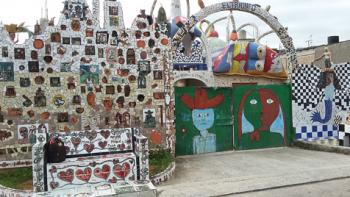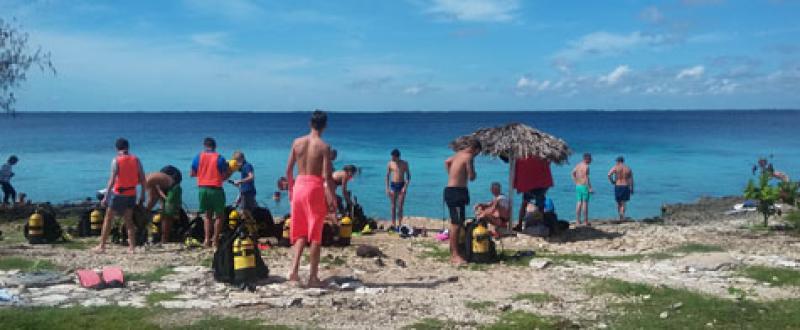Cuba update 2018 (Second of two parts)
This item appears on page 54 of the June 2018 issue.
In part one of this article, I identified the US Department of the Treasury’s “Support for the Cuban People” travel provision that continues to allow independent travel to the island by Americans, as outlined on the PDF that is downloadable at the following URL: www.treasury.gov/resource-center/sanctions/Programs/Documents/cuba_fact_....
On each of my monthly trips to Cuba from October 2017 to April 2018, I have encountered a few American explorers traveling independently under this provision, one which, by all appearances, remains largely unknown to the general traveling public.
However, many of those I have spoken with on the ground in Cuba have attempted to plan their own travel itineraries without a local advisor, which can be a precarious undertaking, particularly if attempting to travel to multiple destinations around the island.
What is very clear is that Americans traveling under this category of license can overwhelmingly benefit from the services of a knowledgeable, Cuba-based, licensed guide and travel planner, who can provide as many or as few planning and guide services as required at remarkably low rates.
Such advice can be valuable when making itinerary arrangements, particularly in terms of finding and getting good lodging at, for example, authorized casas particulares (privately owned accommodations) in the most time-efficient, hassle-free manner.
Unfortunately, many visitors without such assistance waste a lot of time trying to figure out the complicated Cuban transportation equation and end up staying in locations that are not the most practical or advantageous.
Guides also know which entities are government-operated and which are private, in conjunction with the US government’s formal travel regulations.
Guide reference
One guide whom I can overwhelmingly recommend is Martha Ibis (phone +53 5293 2643 [omit the 53 when calling from within Cuba] or email marthaibis@nauta.cu).
In addition to serving as a national guide with both American “People-to-People” and special-interest groups (including many of the tour groups that I’ve led), she also works with individual travelers in planning their Cuba journeys, providing guide services in Havana and beyond as desired.
Cuba guides can also be found at such sites as www.toursbylocals.com/Cuba-Tours.
Typically, such a guide corresponds with travelers by email, meets them on arrival in Havana or another location and continues to be their local contact, advisor and booking source as well as their problem-solving advisor/contact while in Cuba.
Taking advantage of a local expert is particularly important for a visitor to Cuba and will help insure the desired experience, including being able to get behind the scenes to follow up on special interests.
Legal independent travel
While the majority of Americans traveling independently in Cuba are simply not aware of the “Support for the Cuban People” license that legally allows such travel, others who are aware of the option are apparently not willing to subject themselves to the somewhat limiting provisions of the regulation (which I summarized here last month) once they investigate it.
This is understandable, since one of the general characteristics of independent travelers is the desire to travel without imposed time constraints and other restrictions.
However, working with the right Cuban guide/contact in Cuba in advance can help someone overcome the majority of the perceived individual-traveler obstacles.
What is clear, in any case, is that the downturn in the number of travelers from the US, following the November 2017 suspension of the option for individuals to travel under the “People-to-People Travel” license, has primarily affected local Cuban entrepreneurs.
Cuba’s alternative-tourism reality
Then there is the other Cuba-tourism reality that operates virtually undetected by American travelers’ radar. It is the plethora of successful resorts, averaging 500 to 700 rooms each, in many prime oceanfront locations around the island.
Some of these properties are wholly owned by the Cuban government, and others are partnerships between the Cuban government and international hotel corporations.
Currently, there are well in excess of 80 such resorts, with more than 40 of them in the popular Varadero region, a drive of two-plus hours by bus or private car east of Havana and on the Atlantic coast.
These all-inclusive tourist resorts are frequented primarily by Canadians and both Western and Eastern Europeans, including Russians, with seasonal influxes of visitors from South America. The vast majority of such tourists are independent travelers who visit the resorts for a week or longer, as is the case with all-inclusive resorts in other parts of the Caribbean.
Americans, who are officially prohibited from traveling to Cuba as “tourists,” are rarely sighted at such resorts. However, I have personally visited several of these properties legally with licensed “People-to-People” groups. This is accomplished in compliance with the US government’s “People-to-People” program requirements by engaging in daily cultural activities with Cubans in nearby towns and cities during our two nights in residence.
The big picture
As has historically been the case, the majority of pesos filling the Cuban tourism coffers continues to emanate from the massive, aforementioned beach-resort industry.
Consequently, despite the current downturn in numbers of visitors from the US, tourism in Cuba continues to roll along, primarily due to these heavily visited beach resorts. There were over 4.7 million visitors reported in Cuba in 2017. Of these, 619,000 were US citizens and 541,000 were cruise ship passengers, mostly from Europe and the US.
While numbers of visitors from the US were up, overall, in 2017, this is a misleading statistic because the current, continuing downturn didn’t begin until November 2017, when the ban against independent travel under the “People-to-People” license took effect. Forecasts for 2018 US-visitor numbers in Cuba are not positive.
Nevertheless, I expect conditions to improve in the longer term. The long-awaited retirement of Raul Castro after his two 5-year terms as Cuba’s president — following the recent 2-stage elections in March and April when he was replaced by Miguel Diaz-Canel — will hopefully expedite the process.
Another significant tourism trend is abundantly evident in Cuba. China is increasingly involved with important infrastructure and tourism-development projects on the island, as it is in scores of developing countries around the globe.
Today, many young Cubans are being encouraged to learn Mandarin in addition to English, and many Chinese students are studying Spanish in Cuba. Chinese tour groups are traveling to Cuba in increasing numbers, a trend that could be the tip of the iceberg.
In any case, for now, Cuba remains a charming, alluring, inspiring, safe and easily accessible destination on the southern doorstep of the US, one that should continue to attract American visitors indefinitely.
Despite most of them being dreadfully short of personal funds, the Cuban people are educated and have access to free health care. In general, they do not suffer from a sense of entitlement, seek only the opportunity to earn real income and could not be more extending to American visitors.
The bottom line is that, whether Americans are traveling as individuals or with groups under the allowed license categories, there is no better time than the present to experience the diverse and limitless natural and cultural attractions of our largest Caribbean neighbor.
You may reach Randy at 80 America Way, Jamestown, RI 02835; 401/560-0350, randykeck@yahoo.com.


